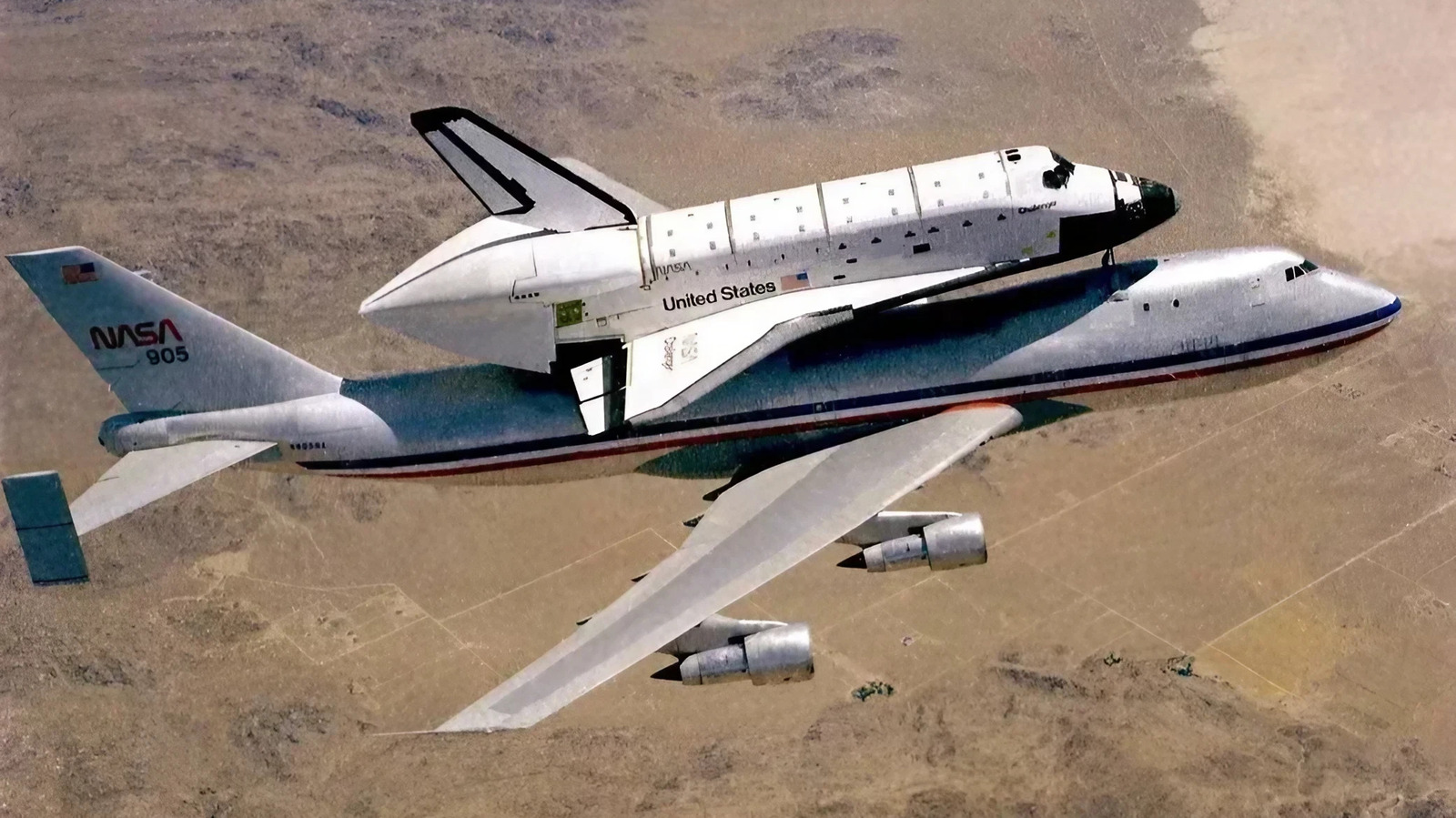When NASA required a transportation solution for its approximately 100-ton space shuttles, it turned to the aviation sector. The agency needed a powerful aircraft capable of carrying such massive payloads. After evaluating options, NASA selected the Boeing 747 over the Lockheed C-5 Galaxy due to its superior design features and reliability.
The decision to use the Boeing 747 stemmed primarily from its airframe configuration. The aircraft’s wings are located below the main fuselage, providing a more stable platform for transporting the space shuttle. In contrast, the C-5’s high-wing design would have posed challenges for mounting the shuttle securely. Additionally, the Boeing 747 is a four-engine jumbo jet that entered commercial service in 1969, boasting remarkable power and performance capabilities. Each of its four Pratt & Whitney engines generates approximately 48,600 pounds of thrust, enabling the aircraft to handle a maximum gross taxi weight of 713,000 pounds.
NASA modified two Boeing 747s for this specialized role. The first, designated NASA 905, was a Boeing 747-123 model acquired from American Airlines in 1974 for approximately $15.6 million. The second aircraft, NASA 911, was a 747-100SR-46 obtained from Japan Air Lines in 1989. Both planes underwent significant alterations, including the addition of three large struts to the fuselage to support the shuttle. This modification required extensive internal structural reinforcement to ensure safety and stability during flight.
To counteract the aerodynamic challenges posed by mounting the shuttle on top, engineers added two extra vertical stabilizers to the tail fins. This enhancement improved directional stability, which was crucial given the shuttle’s delicate thermal protection tiles. NASA also installed instrumentation systems to monitor the orbiter’s electrical loads during flight, ensuring safe operations.
The process of attaching the shuttle to the 747 involved elaborate structures known as Mate-Demate Devices. These devices lifted the orbiter high enough off the ground for the 747 to be positioned underneath and secured. NASA 905 served as the primary transport aircraft for over a decade, with NASA 911 joining the operations in late 1990.
As the shuttle fleet neared retirement, both modified 747s had one last mission: to transport the retired orbiters to their new homes in museums. NASA 905 famously completed three final ferry missions, including delivering the space shuttle Discovery to the Smithsonian’s National Air and Space Museum. This memorable flight featured a celebratory loop around Washington D.C. at an altitude of approximately 1,500 feet.
The NASA 911 was retired in February 2012 and is currently displayed at the Joe Davies Heritage Airpark. NASA 905 followed suit later that year, becoming part of a significant exhibit at Space Center Houston. This transition marked the end of an era for the iconic aircraft that played a vital role in the history of space transportation.







